Through the Garden - Phone Photography - #67 [ENG/ESP]
Hello friends, I hope you're all having a beautiful day. This blog post will be a way to tell a story through photos, but also a record of my participation in Phone Photography Contest - #67
Hola amigo, espero que estén teniendo un día muy lindo. Esta entrada en mi blog será una entrada para contar una historia a través de fotos pero también mi participación en Phone Photography Contest - #67

The first photograph I’m sharing is this small white flower. Even though it wasn’t the first one I took, I want it to be the main image of the post, as it beautifully captures the essence of this entry—dedicated to observing and appreciating the beauty that surrounds us.
La primera fotografía que les comparto es la de esta pequeña flor blanca y aunque no es el orden que la tomé sí la quiero poner como foto principal del post, ya que resume de buena manera el contenido de esta entrada dedicada a observar y apreciar la belleza que nos rodea.
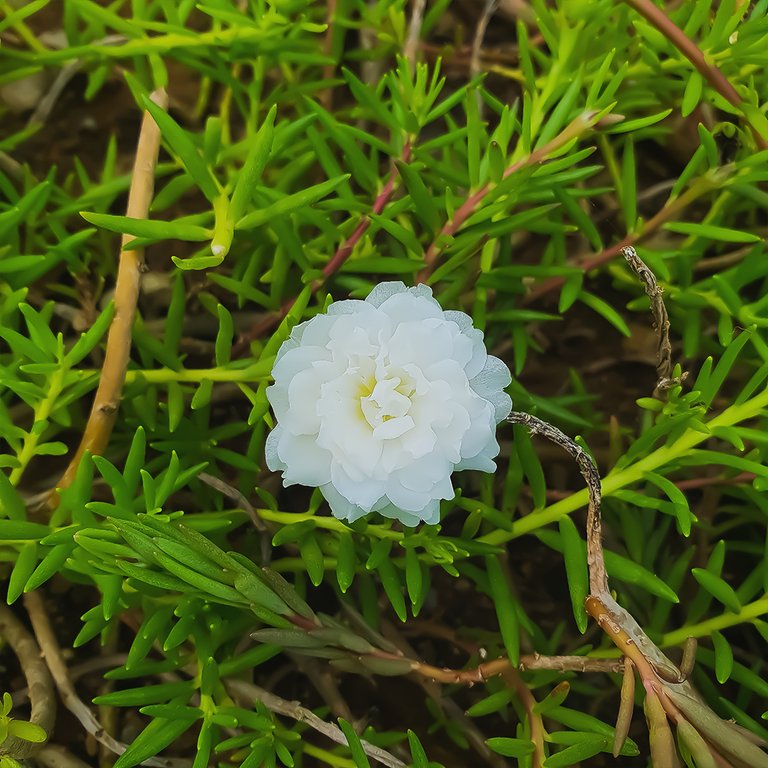 |
|---|
| Main photo of the post |
All of these photos were taken in the garden of the school where I work as a teacher. It’s a rather large garden, filled with various species of flowers and tropical plants. Throughout the year, we can usually find flowers in vibrant colors. That’s why the first images I want to show you are of this large blooming flamboyant tree and how its fallen petals color the grass.
Todas estas fotos fueron tomadas en el jardín de la escuela donde trabajo como profesor, es un jardín bastante amplio repleto de distintas especies de flores y plantas tropicales. Prácticamente todo el año podemos encontrar flores de vistosos colores. Por eso las primeras fotos que les quiero mostrar es la de este gran árbol de framboyán florecido, y cómo los pétalos de sus flores al caer llenan el césped de color.
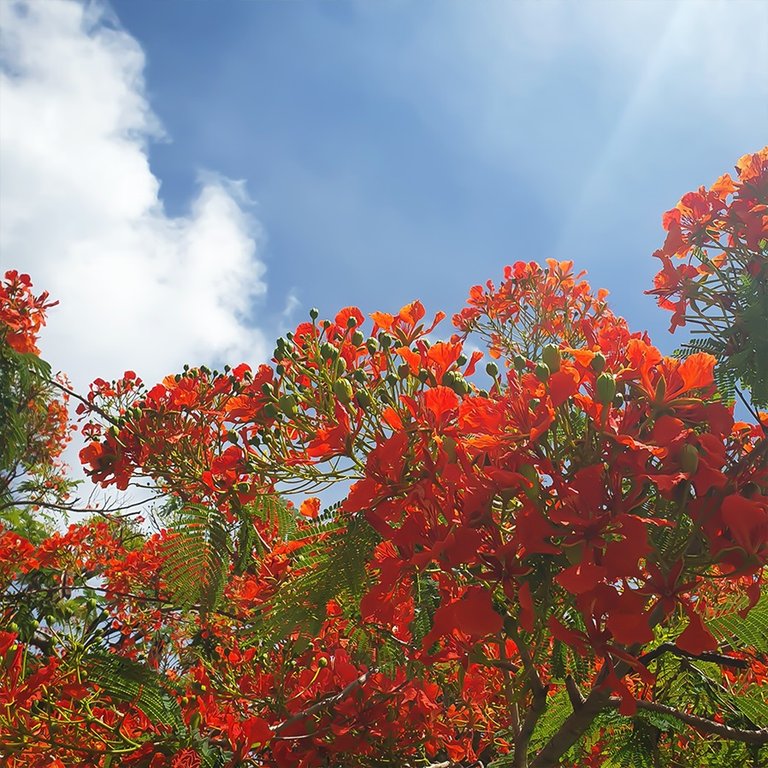 |  |
|---|
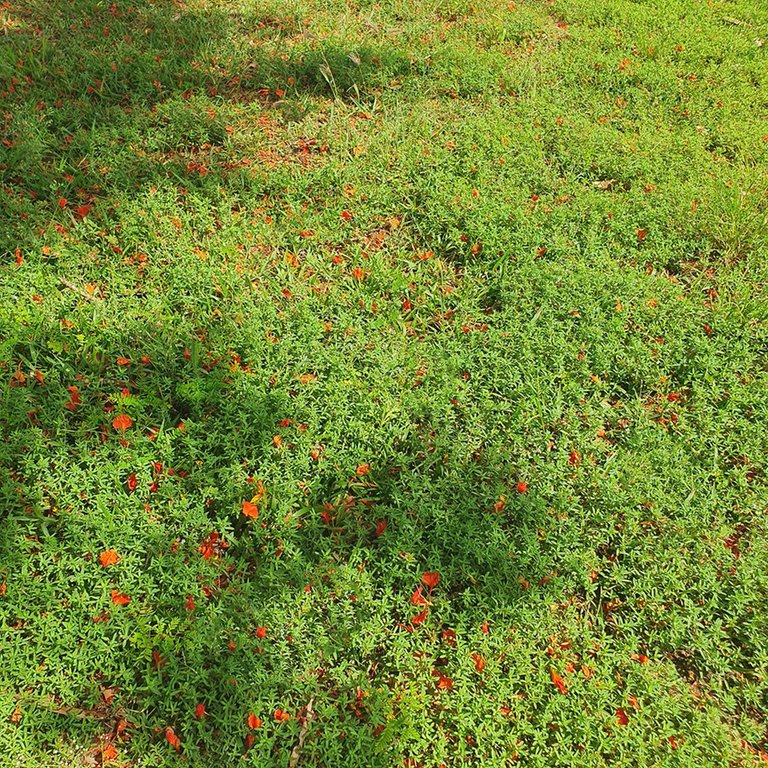
The green leaves of the flamboyant tree are truly beautiful. They’re small, step-like, and cluster gracefully along the branches—one of nature’s most charming leaf patterns.
Las hojas verdes del árbol de framboyán son muy bonitas, son escalonadas y pequeñas y se agrupan en ramas, son de los diseños de hojas mas lindos en la naturaleza.

These beautiful flowers are the stars of the garden. They thrive in the sandiest soil, and I’ve spoken about them before and the many different names they go by depending on the region—from “Bella a las Once” (my favorite name) to moss rose or grandiflora. I love their wide variety of colors—white, red, pink—they’re truly, truly stunning flowers.
Estas bellas flores son las protagonistas del jardín. Crecen en el suelo más arenoso, y ya he hablado sobre ellas antes y los diversos nombres que tienen dependiendo de la región, desde Bella a las Once (mi nombre favorito), moss o grandiflora. Me gusta su gran variedad de colores: blancas, rojas, rosas… son flores muy, muy hermosas.

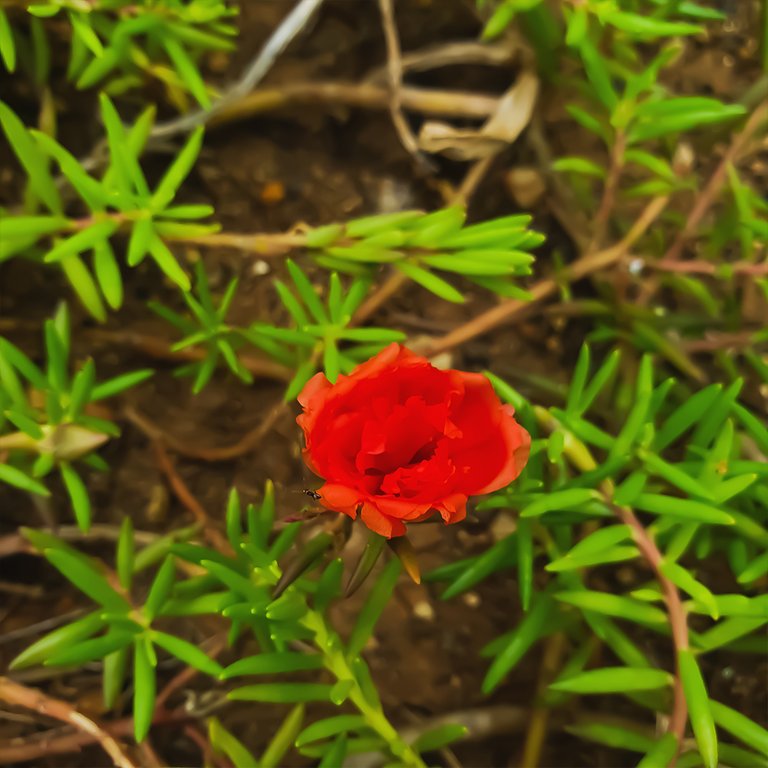 | 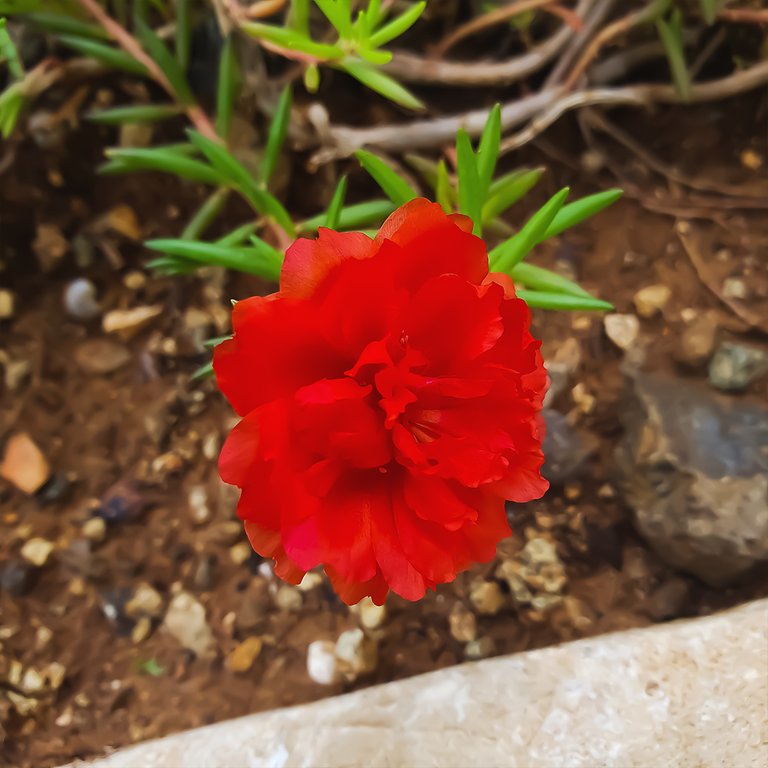 |
|---|
The purple variants of these flowers are the most beloved. Interestingly, they’re also the easiest to grow—though they often appear alone, nestled among blooms of other colors.
De estas flores, las variantes moradas son las que más gustan. Lo interesante es que son las que más fácil se cultivan, aunque suelen aparecer solas entre las de otros colores.

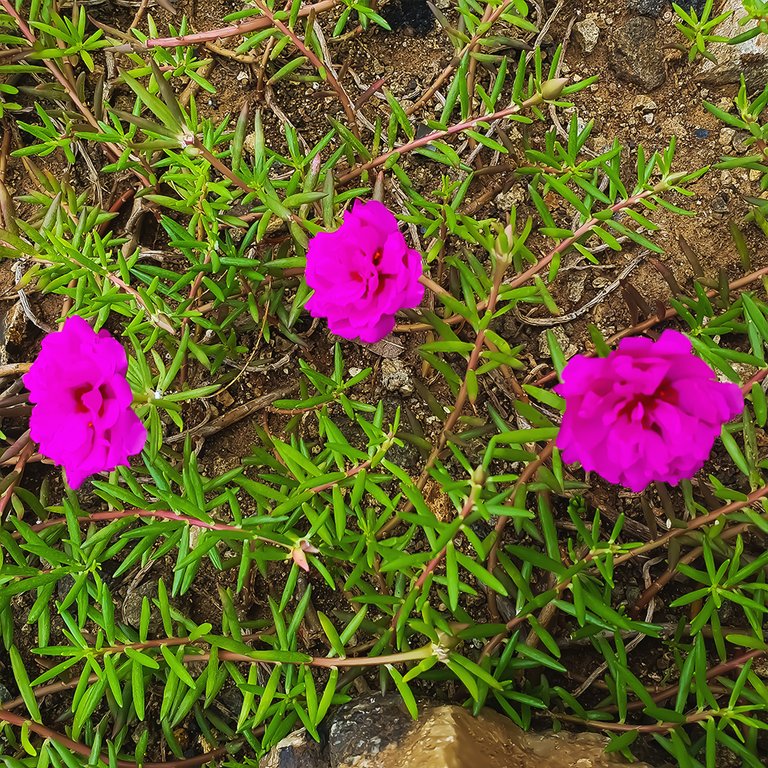 |  |  |
|---|
On the other hand, the white flowers of this species convey a certain sense of peace and purity. It’s fascinating how we associate different qualities with flowers and colors.
En cambio, las flores blancas de esta especie me transmiten cierto grado de paz y pureza. Es interesante ver cómo asociamos cualidades a flores y colores.

This purple maguey plant really caught my attention, as I didn’t remember seeing it in the garden before. If I’m not mistaken, it’s a type of succulent, and it’s easy to recognize by the striking contrast in its leaves—one side a bright green, the other a deep purple. Many properties are attributed to this plant.
Me llamó mucho la atención esta planta de maguey morado, porque no recordaba haberla visto antes en el jardín. Si no me equivoco, es una especie de suculenta y es muy fácil de identificar por la dualidad en sus hojas: una cara verde brillante y otra morada oscura. A esta planta se le atribuyen muchas propiedades.
 |  |
|---|
The texture of this tree really caught my eye, so I took a photo of it. I often search through my photos to create textures for brushes and effects in my drawings and collages, and I believe the lines of this tree will produce a very interesting effect.
Me llamó mucho la atención la textura de este árbol y le tomé una foto. Muchas veces, para crear texturas para pinceles y efectos en mis dibujos y collages, busco entre mis fotos, y creo que las líneas de este árbol darán un efecto muy interesante.
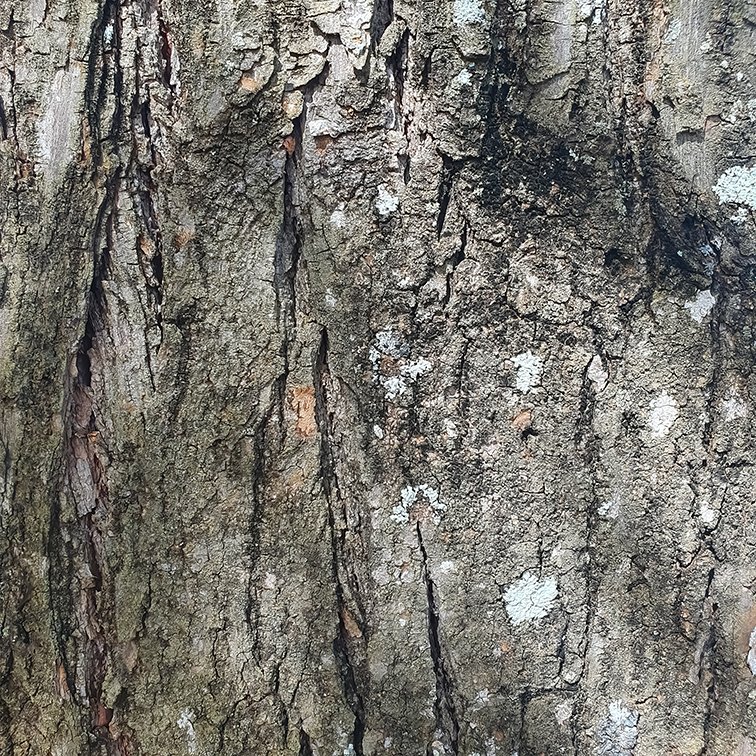
Let’s take a moment to enjoy this beauty—the plant has red, star-shaped flowers that are simply gorgeous. It’s called Jatropha, or at least that’s how my plant identification app labeled it. Curiously, I didn’t know the name before, yet it’s a plant I’ve remembered since childhood, always adorning gardens.
Ahora tomémonos el tiempo de disfrutar de esta belleza. Esta planta tiene las flores rojas y en forma de estrellas—son flores hermosas. Es Jatropha, o al menos así la identificó mi aplicación para reconocer plantas. Algo curioso es que no conocía el nombre; sin embargo, es una planta que recuerdo desde pequeño y la veo siempre adornando jardines.

 | 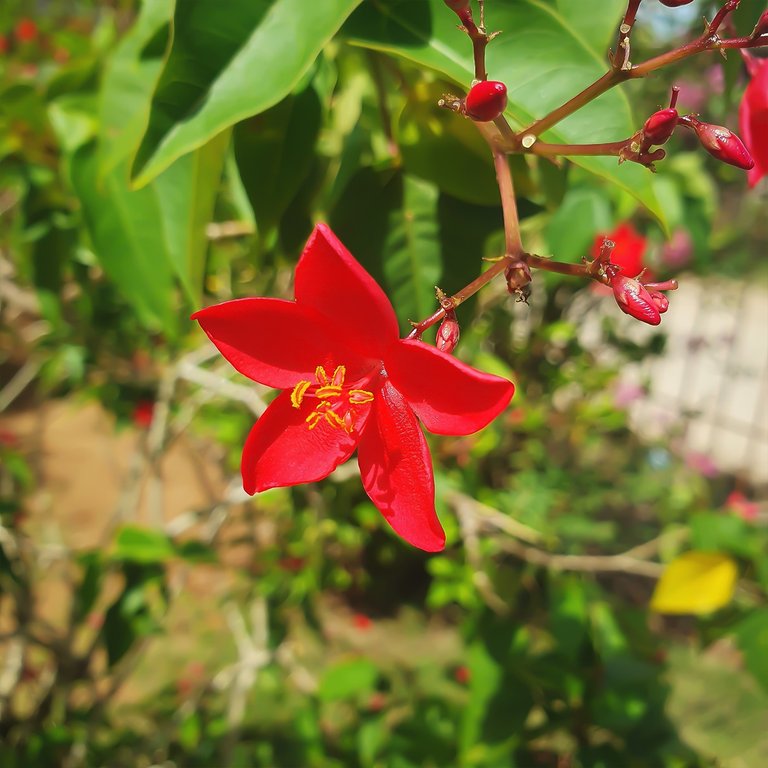 |  |
|---|
This time in shades of pink and purple, though I’ve also seen them in yellow and white—this is the Crepe Myrtle, also known as the “flor de crepé,” perhaps a nod to crepe or tissue paper. It’s a tree that, although native to Asian regions, thrives beautifully in the tropics.
Esta vez en tonos rosas y morados, pero también las he visto de colores amarillos y blancos. Es el árbol de Júpiter, también se le conoce como flor de crepé, quizás en alusión al papel de seda o crespón. Es un árbol que, aunque viene de regiones asiáticas, se da de maravilla en el trópico.

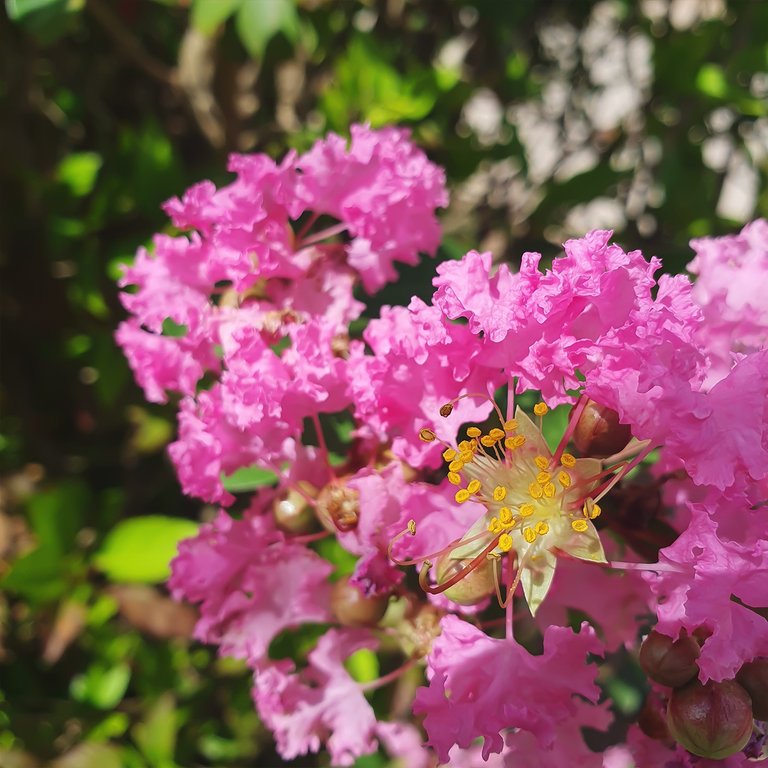 |  |  |
|---|
I couldn’t resist taking a photo of its green fruits—from them, these beautiful flowers will bloom in just a few days.
No pude resistirme de tomarle una foto a sus frutos verdes; de ahí nacerán estas bellas flores al cabo de unos días.

Just recently, I talked about hibiscus—the Flor de Jamaica, or “Pacific Ocean Flower”—because if there’s a plant that screams tropics and is essential to any garden, it’s this one. Perhaps it reigns as the undisputed queen of year-round blooming. Although my favorite is the white variety, there's no denying that the red one is the most sought-after, maybe because it instantly radiates joy.
Hace poco hablé de los hibiscos, flor de Jamaica o Mar Pacíficos, porque si hay una planta que grita trópico y no puede faltar en estos jardines, es ella. Quizás como reina absoluta de floración todo el año. Aunque mi favorita son los de color blanco, no se puede negar que el rojo es el más buscado, quizás porque transmite esa alegría al instante.

 |  |
|---|
The last plant I’ll show you is this one, which had been pruned—and yet, new leaves and flowers are already pushing through. It’s the Bridal Bouquet (Ramo de Novia), a plant that’s quite easy to maintain. While it can be a bit tricky in its early stages, once it’s grown, it becomes simple to care for and prune. I’m sure it’s among many people’s favorite flowers.
La última planta que les mostraré es esta, que la habían podado, y ya las nuevas hojas y flores se abrían camino. Se trata de Ramo de Novia, es una planta que se mantiene muy fácil, aunque en las primeras etapas de su siembra puede dar ciertos problemas para su cuidado, pero cuando ya está grande es fácil de mantener y podar. Estoy seguro de que está entre las flores favoritas de muchos.
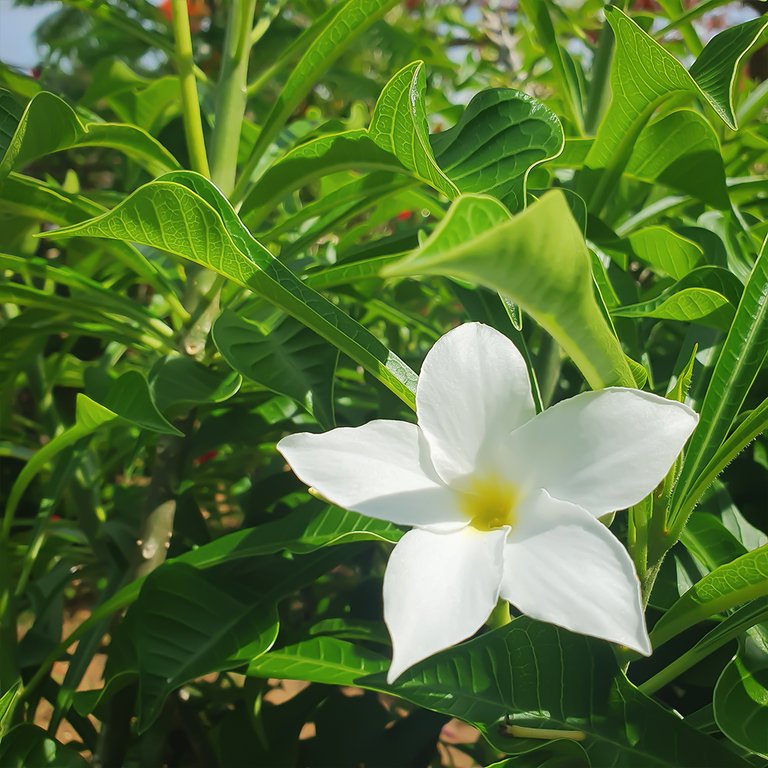
 |  |
|---|
This is how green and young the new shoots looked.
Así de verdes y jóvenes se veían los nuevos brotes.

Thank you, friends, for joining me on this journey through the school garden where I work. With August vacation just around the corner, I wanted to walk through this beautiful place one last time—and take the opportunity to share it with you. Sending you my warmest regards, best wishes, and lots of success. See you in the comments and in the next post! Bye for now!
Gracias amigos por acompañarme en este viaje a través del jardín de la escuela donde trabajo. Ya las vacaciones de agosto se acercan y quería recorrer este bello lugar por última vez y, de paso, mostrárselo a ustedes. Un gran saludo, mucha suerte y éxitos. ¡Nos leemos en los comentarios y nos vemos en el próximo post! ¡Chau!
Phone Photography Contest - #67

| I’m Ernesto, a Cuban passionate about art and writing. Always learning, always growing. Excited to share and learn more every day! I write about art, drawing, video games, nature, and review the things I like. My goal is to inspire and connect with others through my creative journey. |
|---|
Translated with DeepL.com (free version)
I apologize if there are any grammatical errors, English is not my native language, I have tried to be as careful as possible.
I regularly create images on Pixabay, which are free of copyright. Access my gallery by clicking here.
All assets, photos, illustrations and banners have been created by me and are original content, unless otherwise specified.
Banner made in Canvas
!discovery 30
!PIZZA
This post was shared and voted inside the discord by the curators team of discovery-it
Join our Community and follow our Curation Trail
Discovery-it is also a Witness, vote for us here
Delegate to us for passive income. Check our 80% fee-back Program
$PIZZA slices delivered:
@jlinaresp(1/15) tipped @soyernesto
Come get MOONed!
This is too beautiful! You know, I strongly remember phrases like "stop, and take time to smell the flowers" and "hug a tree" as a child. We used to do that often.
Cape Town, o the Cape Peninsula is a funny place, with the infamous table Mountain having two completely opposing sides of fauna and flora, and even weather. Depending on what side you are on, you may see rain and clouds on the one side (Normally the South East facing side where it rains almost all the time and there are mushrooms, and pine trees and plenty greenery and waterfalls - this is the side I grew up on) and on the other side (the North West and in the direction of the City Centre) it's very dry, can be and sunshiny day. with very different types of fauna and flora, mostly sporting succulents and fynbos (hardy but beautiful plants, indigenous to South Africa- The King Protea being our national flower).
Anyway, as kids, we went on many school hikes which taught us to appreciate both sides of nature. I think that rally made us happier. As adults we tend to disconnect from nature. We are too busy and frantic to remember how healing it is to stop and take the time to smell the roses or hug a tree..
It's so lovey that your students have such an incredibly beautiful environment to learn in. I really think it makes all the difference.
Congratulations! Your awesome content has been manually curated by myself, @clairemobey as part of the busy bees community initiative! Please use this opportunity to engage with your fellow busy bees by reading, upvoting and even reblogging their posts. Well done to you! ⭐⭐⭐⭐⭐

🐝🐝🐝Busy Bees Manual Curation Report - Chapter 17🐝🐝🐝